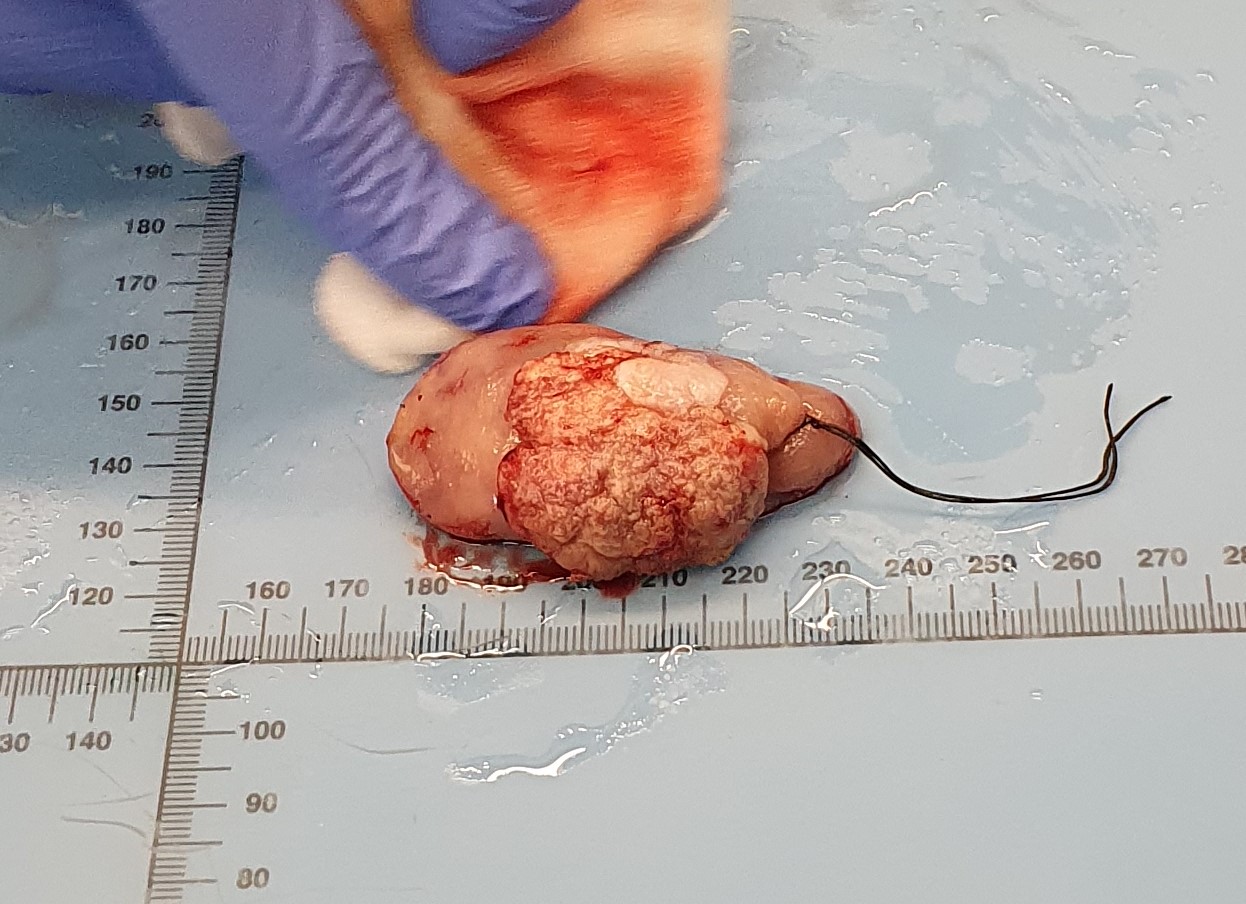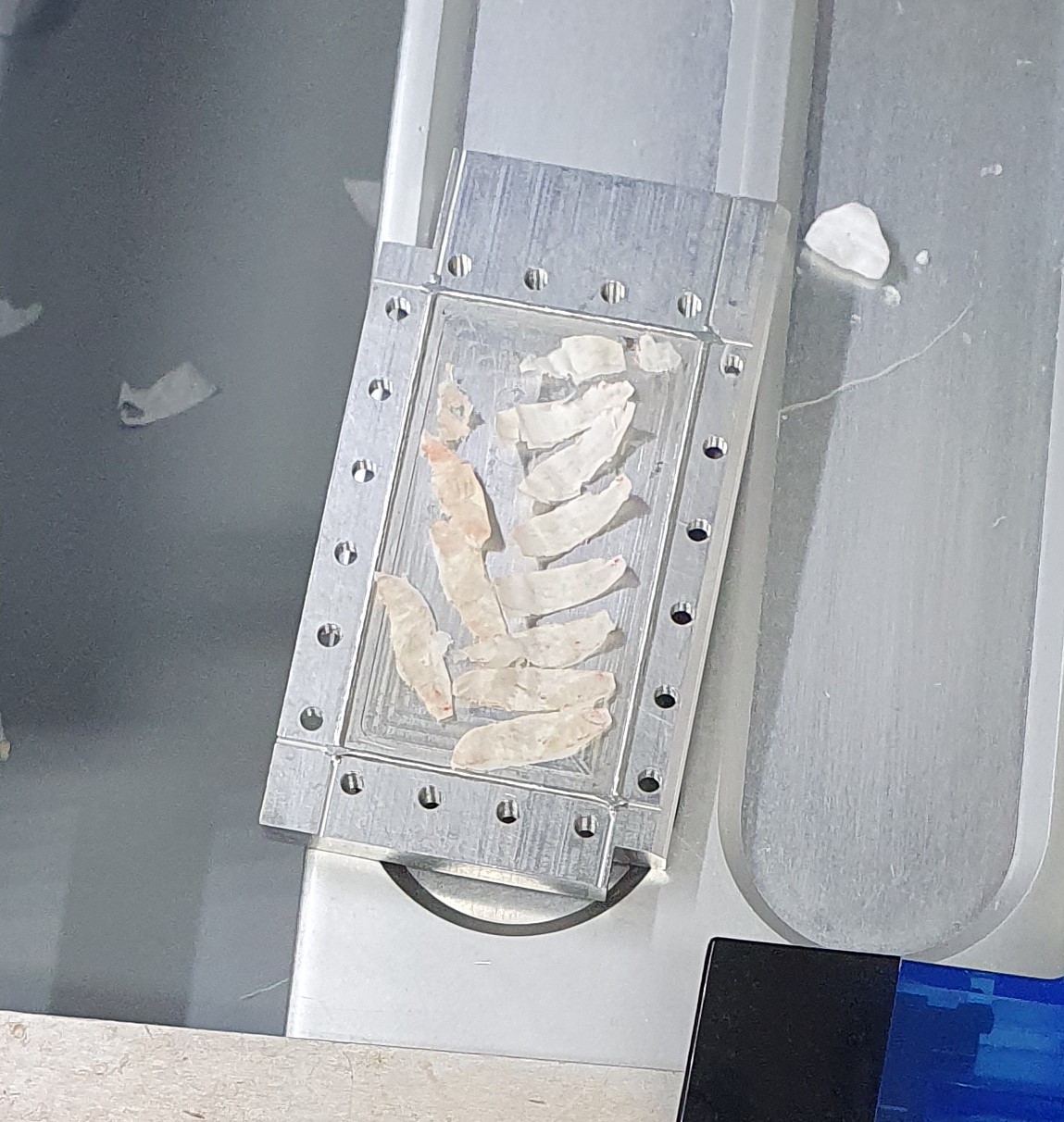Maria Paula Marques and Luís Batista de Carvalho (photo, right) are the first users to come to ISIS from abroad to do experiments since the COVID shutdown; their travel was only possible due to Portugal being on the UK's green list at the time of the experiment.
Through an ongoing collaboration with Victoria
Garcia-Sakai from ISIS and the oncologist Paulo Figueiredo (Portuguese Oncology
Institute in Coimbra, Portugal), they are measuring samples on the IRIS instrument taken from patients who have had cancerous tumours removed. The tissue samples were frozen, cut into frozen slices just 100 micrometres thick, loaded into the neutron sample cans in Portugal and then shipped to the UK.
“Because of additional customs checks, it was very close as to whether the samples would make it intact" explains Maria; “they arrived on the morning of the experiment and luckily were still cold enough."
The group's previous work at ISIS (on OSIRIS and TOSCA) studied individual cancerous and normal human cells to look at the impact of anticancer drugs on intracellular, as well as the difference in water dynamics between normal and malignant cells. They found that the cancerous cells were more flexible and, importantly, different cancers showed different dynamics.
Although they expect the tissue samples to exhibit similar behaviour, they don't know this for sure. Maria says; “when cells are close together within a tissue their behaviour often changes, and so this study is crucial for us to gain a better insight into tissue dynamics - particularly regarding healthy versus malignant conditions."
She adds; “the aim is to understand why different cancers behave differently – namely, why some have a high metastatic ability while others don't."

Above left: tongue tumour and non-cancerous border from which the samples were taken.
| 
Above right: frozen samples loaded into the IRIS sample environment.
|
Further information
Since their visit, the work has been published in PCCP at DOI: 10.1039/D2CP00621A
The group's previous work on this subject can be found at:
Phys. Chem. Chem. Phys. 19 (2017) 2702, doi 10.1039/C6CP05198G
Int. Rev. Phys. Chem. 39 (2020) 67, doi 10.1080/0144235X.2020.1700083
Structural Dynamics 7 (2020) 054701, doi 10.1063/4.0000021
